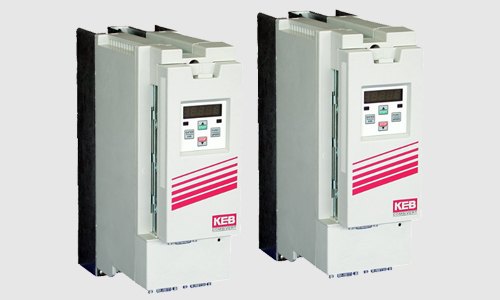Posted on 26th Jul 2023

According to CM Industry Supply Automation these days regenerative drive systems, such as the KEB Drive (R6 regenerative drive), have gained popularity as alternatives for lift applications. Line regenerative units are a desirable choice because high-rise structures are increasingly using effective permanent-magnet gearless motors and have the ability to save energy. This is particularly true for applications involving lifts, where the motor serves as a generator for around half of the time.
Prior to the development of regenerative drives, extra motor energy was dissipated over a braking resistor. Although this type of energy transmission is straightforward, all extra energy is converted to heat, which raises the expense of cooling machine rooms. Building owners and operators can make their structures more energy efficient while saving money by taking the extra energy and putting it back on the line. Line regeneration systems can pay for themselves in as little as two years, depending on the application.
Regenerative systems such as Lenze Drive are generally simple to set up and, once configured properly, run without any problems. They can be installed in the control panel immediately next to the lift drive and will function with every other part of the panel.
Some structures, including hospitals, nursing homes, and apartment buildings, can need emergency power during a blackout. Uninterruptible power supplies (UPS) or backup generators are frequently used to achieve this. If there is enough demand to use the energy, regenerative drives can regenerate back to a generator while operating on emergency power, but buildings that rely on a UPS unit for backup power present an ideal opportunity for regenerative drive.
In essence, the UPS is a sizable DC battery that, in the case of a power failure, supplies emergency power to the lift and controller. It is not possible to regenerate AC power back to an operational UPS since doing so could harm the DC power supply. Regenerative drives must be turned off in order to stop AC power from flowing back to the UPS unit when used in this kind of application. Figure 2 demonstrates how to use this configuration.
As long as the UPS is turned on, a relay contact that opens the enable signal can be used to disable the regenerative drive in this setup. To further prevent modulation by the regenerative motor, a further relay contact can activate an input set up as an external fault condition. With this configuration, the regenerative drive is guaranteed to remain in a "passive" condition and not modulate or regenerate back to the UPS unit thanks to dual-level redundancy. Even without the enable signal, the drive still serves as the rectifier, feeding the drive unit and allowing it to continue driving the motor.
During UPS operation, the siemens drive (VFD) unit's braking resistor can be used to dissipate the regenerated energy produced by the motor (for instance, when an empty car is raised). Since the regenerative drive often starts modulating at a lower DC bus trigger level than the braking transistor activation level, for example, 103% of idle VDC versus 760 VDC, no contactor is required to deactivate the braking resistor in normal operation. Using this configuration guarantees that the regenerative drive and the UPS unit function securely during a power outage.
Line regeneration systems will continue to be crucial as building heights rise and energy efficiency takes on more importance in new construction and remodelling projects. Building owners have choice in selecting the best emergency power backup system for their applications thanks to regenerative drives that can operate with emergency power generators and UPS systems.